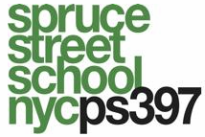The Governors Agenda for Pre-K to 12th Grade, as proposedPART TWO: A BOLD P-12 REFORM AGENDA (pages 218-220)
Since assuming office in 2011, Governor Cuomo has taken important steps to reform the state’s education bureaucracy and improve student outcomes. We have replaced automatic spending with competitive grants, focused on high-quality early education, and emphasized partnerships between educational institutions and employers to ensure that we are preparing our students for the jobs of tomorrow. We also reformed implementation of the Common Core, provided funding for community schools, required that districts have a teacher evaluation system in place, and rewarded high-performing teachers through the successful Master Teacher program. These innovations in education have been supported by an unprecedented increase in State education aid over the last three fiscal years. As of this year, school aid is at its highest level ever and over 65 percent of recent increases were directed to high-need school districts. But, there is still progress to be made:
Section 112. Make the Teacher Evaluation System Real, Accurate and Fair (pages 227-229)
Two years ago, Governor Cuomo provided the leadership to ensure that every school district in the State put a teacher evaluation system in place. The primary purpose of implementing a good teacher evaluation system is to improve practice by recognizing and promoting excellence, providing support strategies and targeting professional development to the teachers who need help to improve, and, in exceptional cases, removing teachers from classrooms if they consistently underperform. Last year, less than one percent of teachers in New York State were rated ineffective; but state test results show that statewide only 35.8 percent of our students in 3rd through 8th grades were proficient in math and 31.4 percent were proficient in English Language Arts. We must ask ourselves: how can so many of our students be failing if our teachers are all succeeding? It is time to put a real, accurate, and fair teacher evaluation system in place that allows us to differentiate among teachers. We must have a system with integrity that can help school leaders recognize and reward outstanding teachers and identify those who need help to improve. Every student deserves to have a high quality teacher. A strong teacher evaluation system helps to ensure that teachers are recognized as professional people whose skills, strengths and weaknesses are not all interchangeable. A system should foster respect for teachers by treating them as professionals with specific and individual skills, not as widgets. There are few professions in which raises are based solely on seniority and years of experience with no regard for merit. We can and must do better for both the teaching profession and for our kids. To ensure that our teacher evaluation system is real, accurate and fair, Governor Cuomo proposes a series of reforms. The core point of contention for the UFT as communicated by Spruce teachers.113. Reform Teacher Ratings (pages 229-230)
Currently, we allocate 20 percent of the score to the state-test/student growth measure; 20 percent to a local measure that inflates scores and leads to unnecessary testing; and 60 percent to qualitative measures of effectiveness (including observations and artifacts) that are not standard across districts and are entirely manipulable. The Governor proposes that the teacher evaluation system be simplified and standardized. Instead of two student growth measures, we will have one. We will eliminate the local measure. Fifty percent of the score will be based on state tests, or, in the case of teachers in non-tested grades or subjects, a student growth measure that measures one year of academic growth. The remaining 50 percent of the score will be allocated to observations and shall include at least two. At least one observation must be conducted by an independent observer to be selected from among the following options:
|
|
Didn't find what you were looking for? Search the site! |
|
|
Spruce Street School - PS 397
12 Spruce Street New York, NY 10038 212-266-4800 (Fax) 212-266-4805 |
Nancy Harris, Principal
Katya Haratonik, Assistant Principal(IA) School Hours 8:15 am - 2:35 pm |
